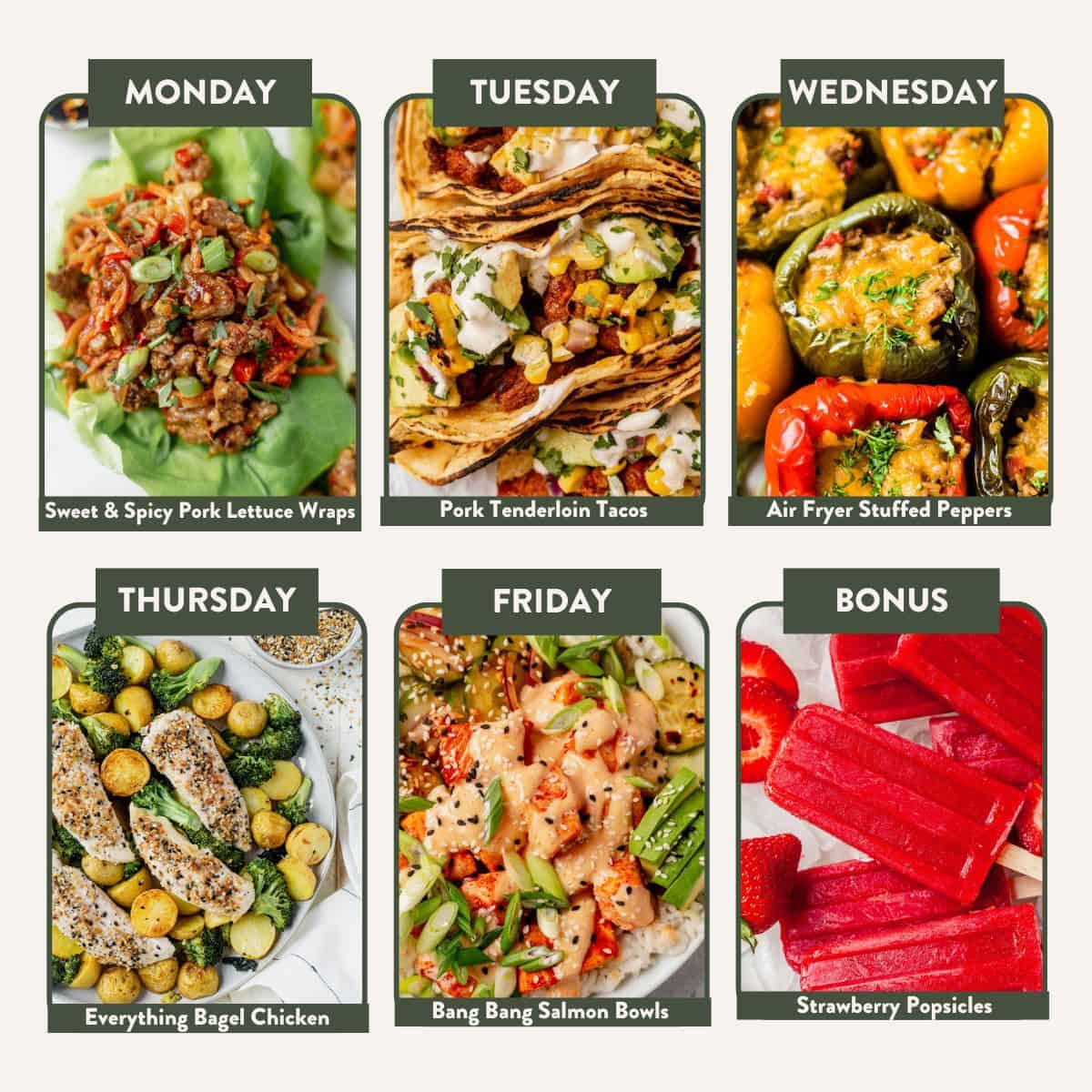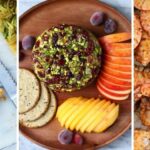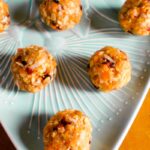Embark on a culinary adventure with “Dinner Without Dairy: 10 Unforgettable Recipes,” a collection designed to prove that delicious meals don’t require dairy. Imagine vibrant plates bursting with flavor, textures ranging from creamy to crunchy, and aromas that tantalize the senses – all without a single dairy product in sight. This journey explores innovative recipes, highlighting the versatility of dairy-free cooking and showcasing the surprising depth of flavor achievable without traditional dairy ingredients. Prepare to redefine your expectations of dairy-free dining.
From hearty pasta dishes to succulent meat-based entrees and satisfying vegetarian options, this cookbook caters to a wide range of tastes and dietary needs. Each recipe is meticulously crafted to not only be delicious but also nutritionally balanced, offering a healthy and satisfying alternative to traditional dairy-laden meals. Discover the secrets to creating creamy sauces without cream, rich flavors without cheese, and textures that will leave you wanting more. Prepare to be amazed by the possibilities.
Recipe Selection & Categorization

This section details the organization of the ten dairy-free recipes into thematic categories, highlighting the unique culinary characteristics of each dish and the rationale behind their grouping. The categorization allows for easy navigation and understanding of the diverse culinary possibilities within dairy-free cooking. Each category represents a distinct culinary approach, showcasing the versatility of dairy-free ingredients.
The recipes are categorized to showcase the breadth of dairy-free cuisine, moving beyond the limitations often associated with dairy-free cooking. By grouping similar recipes, we highlight the adaptability of various ingredients and cooking techniques within a specific culinary style. This organizational structure offers a clear and concise understanding of the recipe collection’s scope and potential applications.
Pasta Dishes
This category showcases the creamy textures and satisfying flavors achievable without dairy, using innovative techniques and plant-based alternatives. The recipes highlight the versatility of pasta as a base for both simple and complex dishes.
- Creamy Tomato and Roasted Red Pepper Pasta: This recipe uses blended roasted red peppers and nutritional yeast to create a rich, dairy-free sauce, showcasing the vibrant colors and bold flavors of roasted vegetables.
- Lemon-Garlic Pasta with Asparagus: This dish features a bright, zesty sauce made with lemon juice, garlic, and vegetable broth, emphasizing fresh, seasonal ingredients and simple preparations.
Meat-Based Dishes
These recipes demonstrate how dairy-free cooking can enhance the natural flavors of meat, creating hearty and satisfying meals without relying on creamy sauces or dairy-based additions. The focus is on bold flavors and robust textures.
- Dairy-Free Beef Bourguignon: This classic French stew is adapted for dairy-free cooking, using vegetable broth and red wine to create a rich, flavorful sauce that coats tender beef chunks and earthy mushrooms. The result is a comforting and deeply satisfying dish.
- Spicy Korean Beef Bowls: This recipe utilizes a vibrant, spicy marinade for the beef, incorporating gochujang paste and other bold Asian flavors. The result is a flavorful and visually appealing bowl, perfect for a quick and satisfying meal.
Vegetarian Dishes
This category highlights the potential of plant-based ingredients to create complex and satisfying meals without any dairy products. The recipes showcase the versatility of vegetables, legumes, and grains in creating diverse and flavorful dishes.
- Creamy Vegan Mushroom Stroganoff: This recipe uses a cashew-based cream sauce to achieve a rich and luxurious texture without any dairy. Earthy mushrooms and onions add depth and complexity.
- Roasted Vegetable and Quinoa Bowl with Tahini Dressing: This vibrant bowl features roasted seasonal vegetables, hearty quinoa, and a creamy tahini dressing, demonstrating the versatility of plant-based proteins and healthy fats.
Global Flavors
This category explores the world of dairy-free cooking across various cuisines, demonstrating how traditional recipes can be adapted and enhanced without dairy.
- Coconut Curry with Chickpeas and Spinach: This fragrant and flavorful curry utilizes coconut milk as a creamy base, showcasing the versatility of coconut in dairy-free cooking. The combination of spices and vegetables creates a vibrant and aromatic dish.
- Dairy-Free Pad Thai: This classic Thai noodle dish is adapted to be dairy-free, using a tamarind-based sauce and a variety of fresh vegetables and herbs. The result is a flavorful and authentic-tasting Pad Thai.
Sweet Treats
This category showcases the possibilities of creating delicious and decadent desserts without relying on dairy products, demonstrating that dairy-free desserts can be just as satisfying and enjoyable.
- Vegan Chocolate Avocado Mousse: This rich and decadent mousse uses avocado as a creamy base, creating a surprisingly delightful texture and intense chocolate flavor. It’s a testament to the versatility of unexpected ingredients.
- Dairy-Free Apple Crumble: This classic dessert is adapted using a gluten-free oat crumble topping, showcasing the ability to create satisfying textures and flavors without relying on butter or dairy-based ingredients.
Detailed Recipe Breakdown (Example: Creamy Tomato & Basil Pasta)
This section provides a step-by-step guide for creating a vibrant and flavorful dairy-free Creamy Tomato & Basil Pasta. This recipe showcases how delicious and satisfying dairy-free cooking can be, proving that you don’t need cream to achieve a luxuriously creamy texture. The finished dish is a testament to the power of simple, fresh ingredients.
The following steps detail the preparation of this delightful pasta dish, emphasizing the simplicity and speed of its creation. Each step is crucial in building the layers of flavor and texture that make this recipe so memorable.
Recipe Preparation Steps
- Begin by preparing the sauce. In a large pan, heat a tablespoon of olive oil over medium heat. Add two cloves of minced garlic and sauté for about 30 seconds, until fragrant. The aroma at this stage is subtly pungent, a preview of the savory flavors to come.
- Add a 28-ounce can of crushed tomatoes, a teaspoon of dried oregano, half a teaspoon of salt, and a quarter teaspoon of black pepper. Bring the mixture to a simmer, then reduce heat and cook for 15 minutes, stirring occasionally. The sauce will thicken slightly and develop a rich, deep red hue during this time. The aroma will evolve into a complex blend of tomato, garlic, and herbs.
- While the sauce simmers, cook 8 ounces of pasta according to package directions. The pasta should be cooked al dente, offering a satisfying bite. The texture at this stage is firm yet yielding.
- For the creamy texture, blend 1/2 cup of raw cashews (soaked in hot water for at least 30 minutes) with 1/4 cup of nutritional yeast, 2 tablespoons of lemon juice, and 1/4 cup of water in a high-speed blender until completely smooth and creamy. This cashew cream adds a rich, nutty flavor and a velvety texture to the sauce, mimicking the richness of traditional cream sauces.
- Once the pasta is cooked, drain it and add it to the simmering tomato sauce. Stir to combine. The pasta absorbs the sauce, creating a beautiful coating.
- Stir in the cashew cream and half a cup of fresh basil leaves. The basil adds a vibrant green color and a refreshing, slightly peppery aroma that complements the tomato sauce perfectly. Gently toss to coat the pasta evenly.
- Serve immediately. Garnish with extra basil leaves and a drizzle of olive oil, if desired.
Finished Dish Description
The finished Creamy Tomato & Basil Pasta is a vibrant masterpiece. The sauce is a deep, rich red, punctuated by the bright green of the fresh basil. The aroma is intoxicating – a fragrant blend of ripe tomatoes, garlic, oregano, and basil, with a subtle nutty undertone from the cashew cream. The texture is wonderfully creamy and satisfying; the pasta is perfectly al dente, coated in a luscious sauce that clings to every strand. Each bite offers a burst of fresh, vibrant flavors, a testament to the simplicity and quality of the ingredients.
Ingredients and Their Roles
| Ingredient | Quantity | Role |
|---|---|---|
| Olive Oil | 1 tbsp | Adds flavor and helps sauté garlic |
| Garlic | 2 cloves, minced | Adds savory flavor to the sauce |
| Crushed Tomatoes | 28 oz can | Forms the base of the sauce |
| Dried Oregano | 1 tsp | Adds warmth and depth of flavor to the sauce |
| Salt | 1/2 tsp | Enhances the flavors of the sauce |
| Black Pepper | 1/4 tsp | Adds a subtle spiciness to the sauce |
| Pasta | 8 oz | Main component of the dish |
| Raw Cashews (soaked) | 1/2 cup | Creates the creamy texture of the sauce |
| Nutritional Yeast | 1/4 cup | Adds a cheesy flavor and creaminess |
| Lemon Juice | 2 tbsp | Adds brightness and acidity to balance the richness |
| Water | 1/4 cup | Adjusts the consistency of the cashew cream |
| Fresh Basil | 1/2 cup | Adds freshness, flavor, and vibrant color |
With “Dinner Without Dairy: 10 Unforgettable Recipes,” you’ll discover that dairy-free cooking is not a limitation, but an exciting opportunity for culinary exploration. The recipes within offer a diverse range of flavors and textures, proving that delicious and healthy meals are achievable without dairy. From the vibrant colors of the roasted vegetable dishes to the comforting warmth of the creamy, dairy-free sauces, each recipe is a testament to the power of creative cooking and the surprising versatility of dairy-free ingredients. Embrace the challenge, experiment with the substitutions, and delight in the unforgettable flavors you’ll create.
Common Queries
Can I use coconut milk in all the recipes?
While coconut milk is a great dairy-free alternative, it’s not suitable for every recipe. Some recipes call for specific textures or flavors that coconut milk might not provide.
Are these recipes gluten-free?
Not all recipes are inherently gluten-free. The recipes will indicate if gluten-containing ingredients are used, and suggestions for substitutions will be provided.
How long do the leftovers last?
Leftovers should be stored properly in airtight containers in the refrigerator and consumed within 3-4 days.
What are the best substitutions for cheese?
Several options exist, including nutritional yeast for a cheesy flavor, cashew cream for a creamy texture, or various vegan cheeses available commercially.


